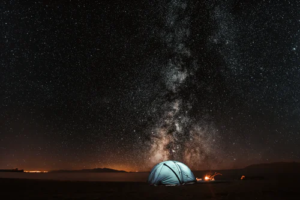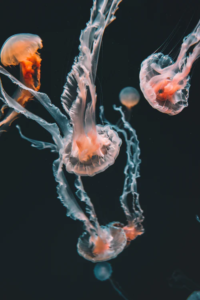As a kid, wide-eyed and full of wonder, you likely spent a lot of time asking the adults around you questions like, “Why is the sky blue?” or “Why does chocolate taste better than broccoli?”
Well, we now know that the sky is blue because the light reflects off of the ocean, and we know chocolate tastes better because sugar supplies us with dopamine.
But there is still so much we don’t know — so much we didn’t get to ask! As we grew older, we experienced more and more about life. Shouldn’t we have been asking even more questions?
It’s never too late to start asking questions again. Here are some STEM questions you may not have gotten the chance to explore!
Outer Space
1. How many stars are in the Milky Way?
Stars are among the most highly debated topics in astronomy. One Google search gives a multitude of answers falling between 100-400 billion. Modern-day astronomers mathematically estimated that there are 300 billion stars within the Milky Way Galaxy.
It’s important to note that a majority of these stars are not visible. Only about 9,000 are visible from Earth (under the right conditions), and it’s only possible to see about 4,500 at a time from a single location.
2. How far away is our moon?
Well, let’s just say you would go through an entire car’s lifespan before completing a drive to the moon. Believe it or not, the Earth’s moon is roughly 238,855 miles away from us! For reference, you could fit 30 Earths at its farthest point and 28 moons at its closest point.
By spacecraft, it takes three days to travel this distance, and, theoretically, it would take 267 days to bike to the moon.
Deep Blue Sea
3. Do sharks sleep?
It was once a popular belief that sharks had to keep moving to survive. While it’s true that some species need to maintain constant movement, sharks do sleep. They just don’t experience sleep the same way humans experience sleep.
Additionally, did you know that sharks don’t have eyelids? As they sleep, they continue to watch their surroundings, scanning nonstop for other sea creatures. In short, sharks enter a state of deep sleep, but their consciousness is never fully suspended.
4. How have jellyfish evolved?
Turritopsis dohrnii, also known as “the immortal jellyfish ,” is a species of jellyfish that has perfected age regression and cloning. When faced with danger or injury, these jellyfish can turn back into a polyp — a form from earlier in their development cycle. Essentially, this would be the equivalent of a frog turning back into a tadpole!
Unfortunately, tadpoles don’t produce eggs, and they certainly don’t produce eggs that are genetically identical to themselves. But when this species of jellyfish reverts to a polyp, it does exactly this — except instead of eggs, it’s medusae.
Computers
5. What did the first computer look like?
Before technology, the word “computer” referred to any human being who was exceptional in the field of mathematics. So, it only makes sense that the first computer was designed to complete mathematical equations and print out the results.
Charles Babbage and Ava Lovelace (who holds the title of the first computer programmer) conceptualized this invention in 1822. Unfortunately, it wasn’t created in its full glory until 1991.
Babbage was also responsible for conceptualizing the first “general-purpose computer “in 1837.
6. What was the world’s first website?
As unbelievable as it may seem, you can still browse the first website in the world right here. At the time of its creation, the World WideWeb, as we know it, was brand new. Therefore, it’s only fitting that the first website was an instructional page explaining the functionality of the internet and how to properly utilize it.
It was published on August 6, 1991.
The World Around Us
It’s important to keep asking questions about the world around you. If nobody ever asked questions, there wouldn’t be any scientists around to discover the answers. At the National STEM Honor Society, we believe in asking questions and cultivating an environment to find the answers you are seeking.
Hopefully, this article has awakened your curiosity and supplied you with some answers to the questions you didn’t know you were asking.
By Emily Hyser on June 16th, 2021
Your NSTEM Journey Begins Here!




